Abstract
Merz, George S. (University of Wisconsin, Madison), and Joe B. Wilson. Spontaneous mutation and recombination among brucellaphages. J. Bacteriol. 91:2356–2361. 1966.—Two plaque morphology variants, as seen on Brucella abortus 544A, termed c (for clear plaque) and lc (for late-clearing plaque) were isolated from stocks of wild-type brucellaphage and from colonies of B. abortus 544A which had undergone an alteration in colonial morphology associated with the establishment of the phage carrier state. Single-burst experiments showed that the phage variants arise by spontaneous mutation of the wild-type phage during its replication on B. abortus strain R19. Two-factor crosses of independently occurring c mutant phages showed the presence of wild-type recombinants among the progeny. Control experiments showed that there are no strong selective forces against either wild-type or c mutant phage inherent in the cross-procedure. Other control experiments ruled out the possibility that wild-type phage in the cross-progeny resulted from either back mutation of the c mutants or the presence of wild-type phage among the input c mutants.
Full text
PDF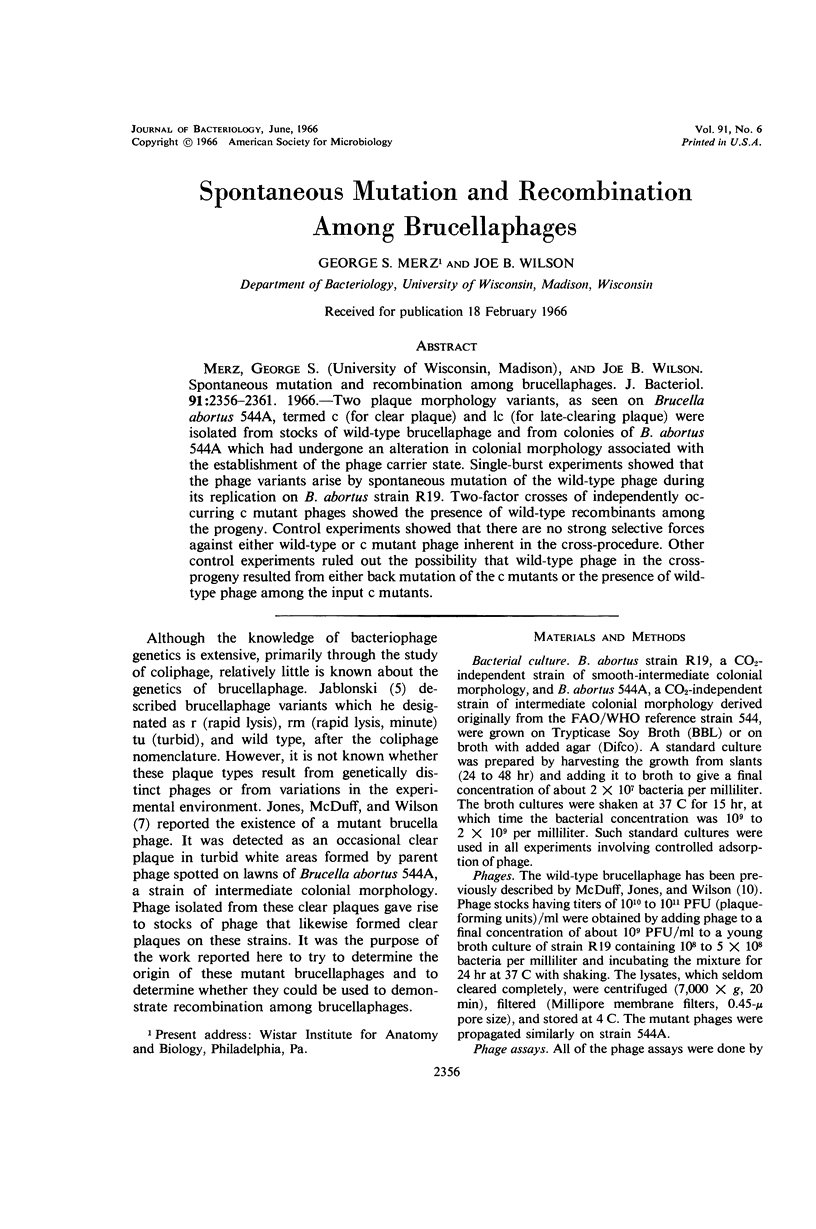
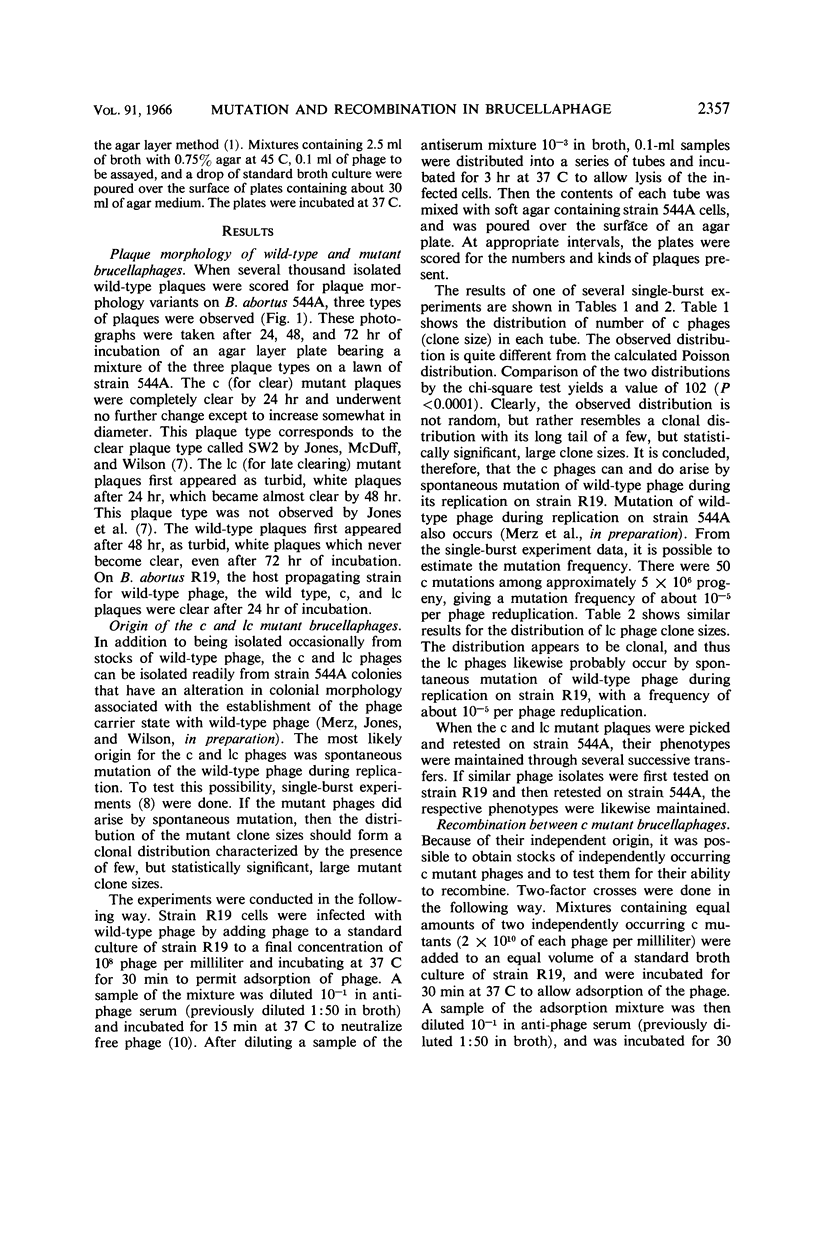
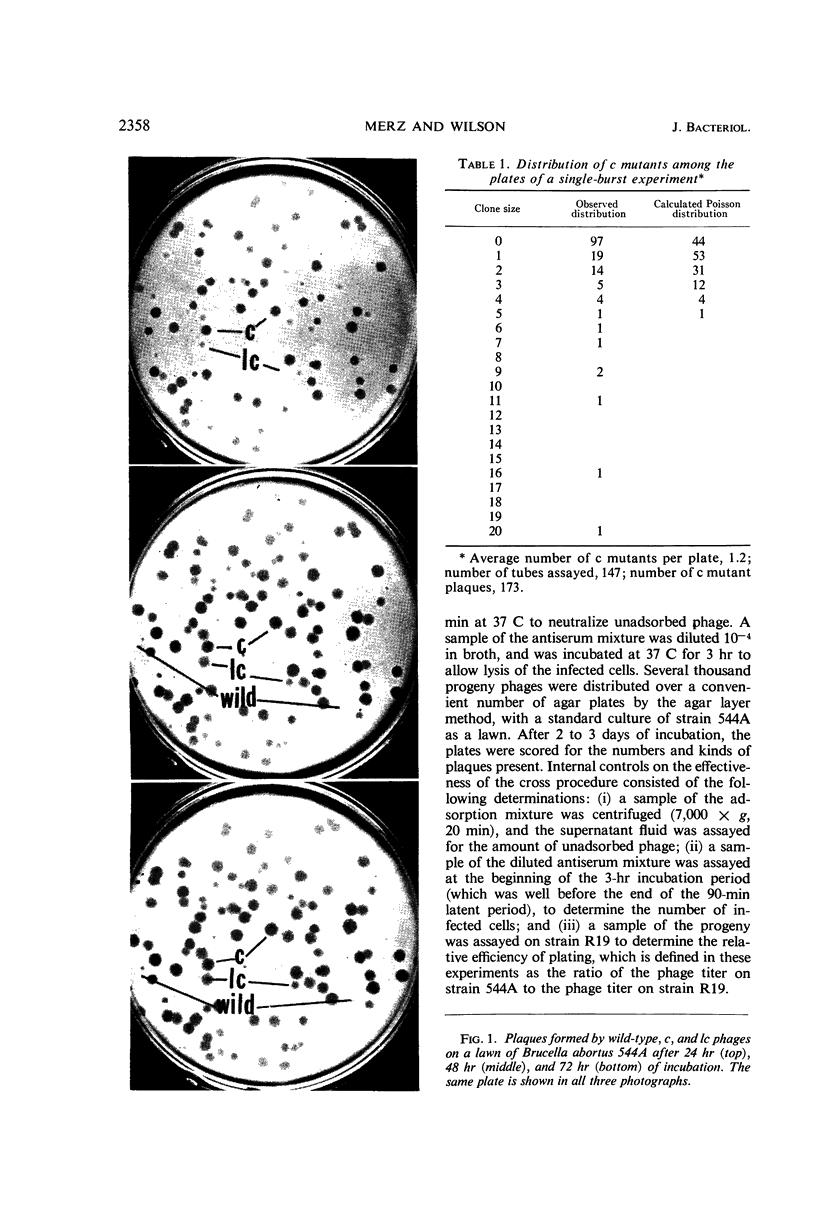

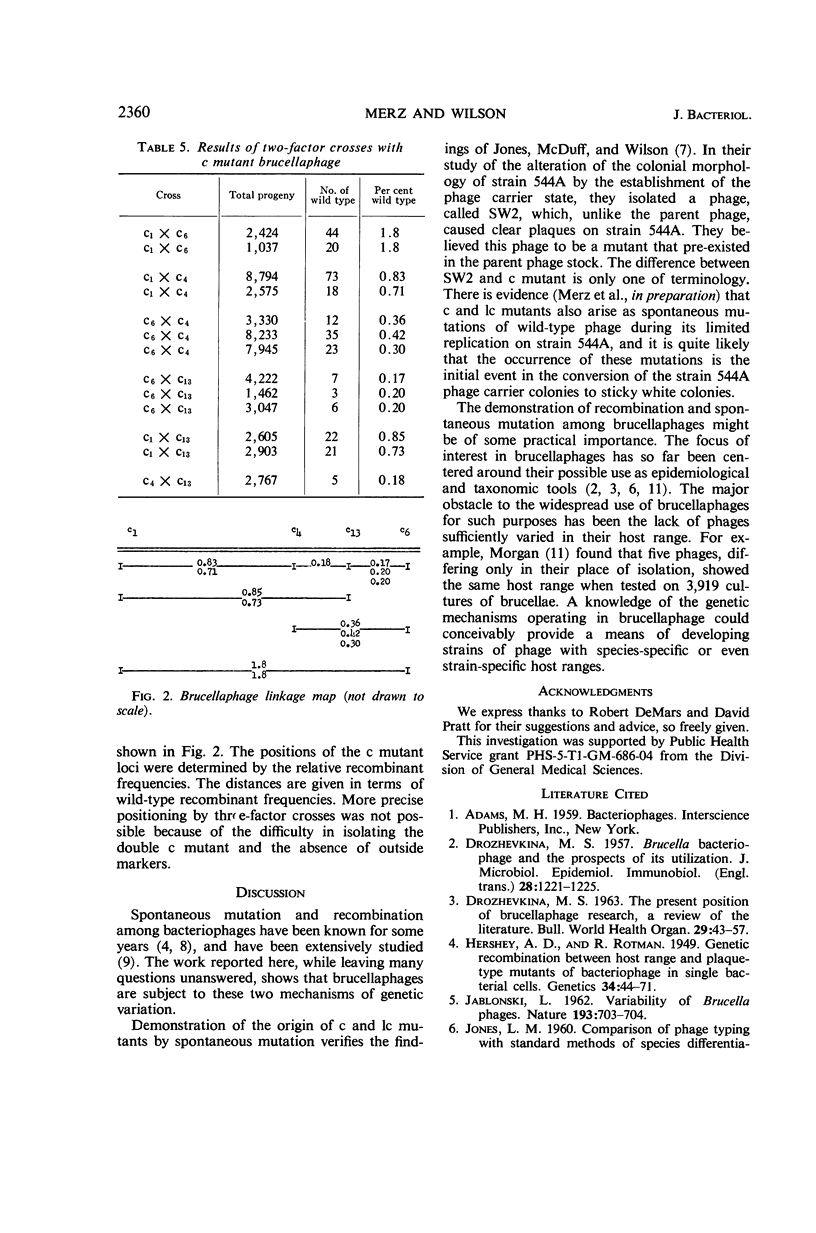
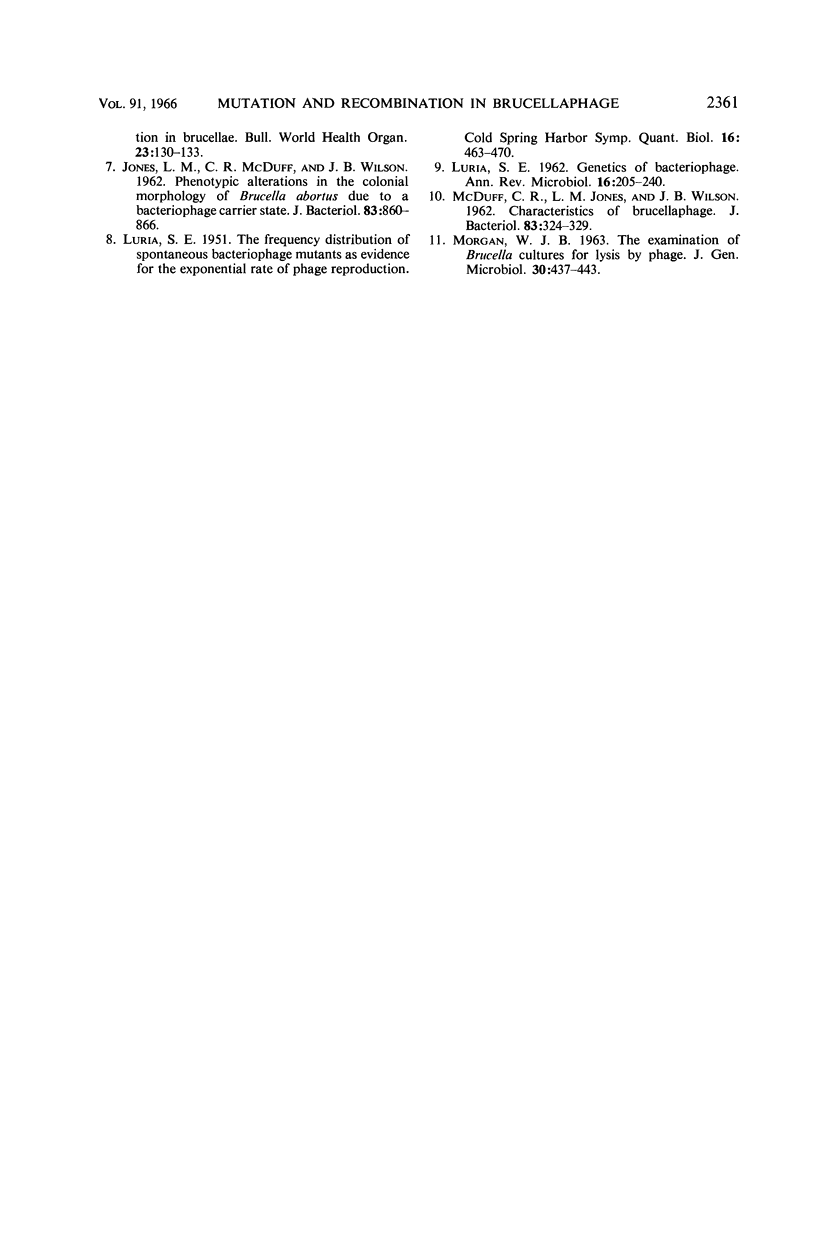
Images in this article
Selected References
These references are in PubMed. This may not be the complete list of references from this article.
- DROZEVKINA M. S. THE PRESENT POSITION IN BRUCELLA PHAGE RESEARCH. A REVIEW OF THE LITERATURE. Bull World Health Organ. 1963;29:43–57. [PMC free article] [PubMed] [Google Scholar]
- Hershey A. D., Rotman R. Genetic Recombination between Host-Range and Plaque-Type Mutants of Bacteriophage in Single Bacterial Cells. Genetics. 1949 Jan;34(1):44–71. doi: 10.1093/genetics/34.1.44. [DOI] [PMC free article] [PubMed] [Google Scholar]
- JABLONSKI L. Variability of Brucella phages. Nature. 1962 Feb 17;193:703–704. doi: 10.1038/193703a0. [DOI] [PubMed] [Google Scholar]
- JONES L. M., McDUFF C. R., WILSON J. B. Phenotypic alterations in the colonial morphology of Brucella abortus due to a bacteriophage carrier state. J Bacteriol. 1962 Apr;83:860–866. doi: 10.1128/jb.83.4.860-866.1962. [DOI] [PMC free article] [PubMed] [Google Scholar]
- LURIA S. E. Genetics of bacteriophage. Annu Rev Microbiol. 1962;16:205–240. doi: 10.1146/annurev.mi.16.100162.001225. [DOI] [PubMed] [Google Scholar]
- LURIA S. E. The frequency distribution of spontaneous bacteriophage mutants as evidence for the exponential rate of phage reproduction. Cold Spring Harb Symp Quant Biol. 1951;16:463–470. doi: 10.1101/sqb.1951.016.01.033. [DOI] [PubMed] [Google Scholar]
- McDuff C. R., Jones L. M., Wilson J. B. CHARACTERISTICS OF BRUCELLAPHAGE. J Bacteriol. 1962 Feb;83(2):324–329. doi: 10.1128/jb.83.2.324-329.1962. [DOI] [PMC free article] [PubMed] [Google Scholar]



